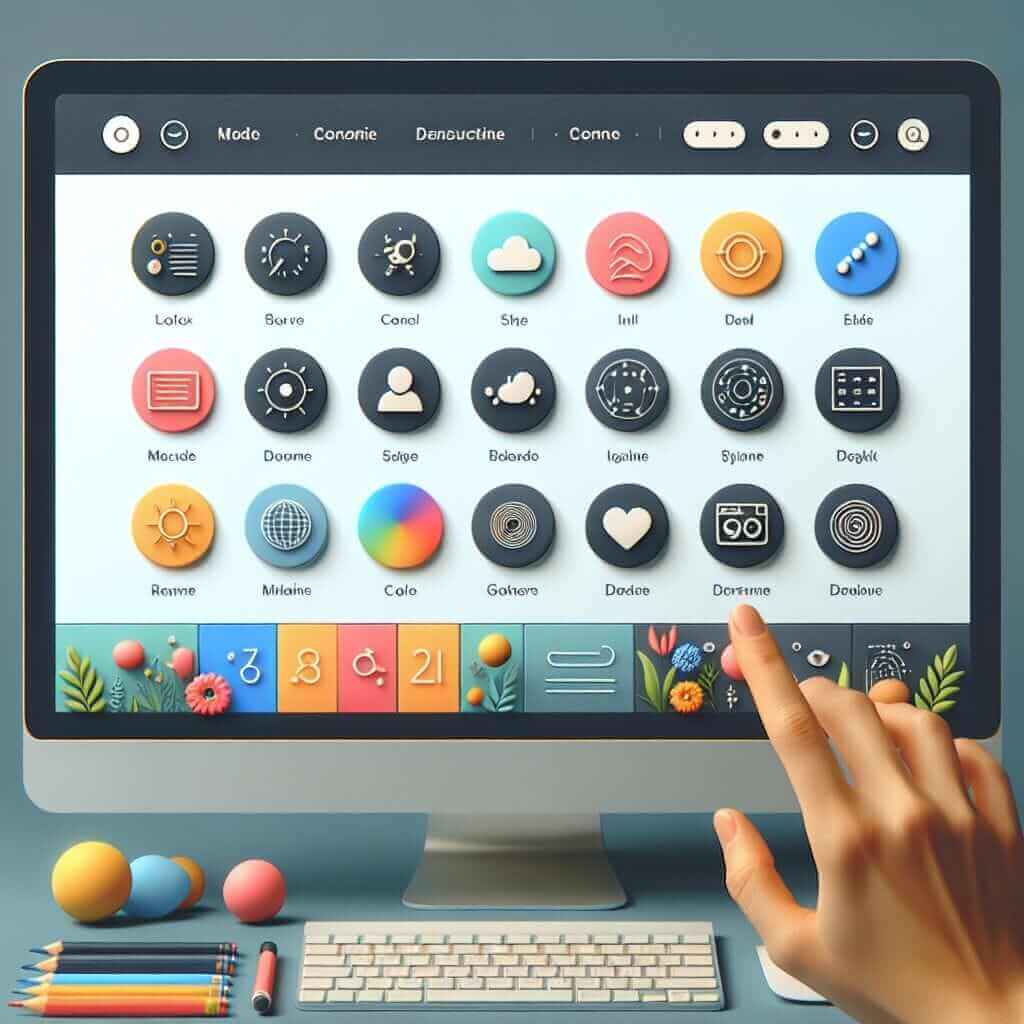The realm of technology often finds its way into the IELTS exam, challenging your grasp of specific vocabulary. “User interface” (UI), a term frequently appearing in listening and reading sections, is one such example. Understanding this term and its related concepts is crucial for achieving a high IELTS score.
Here are some synonyms for “user interface” to enhance your vocabulary:
- Graphical User Interface (GUI): /ˈɡræf.ɪ.kəl ˈjuː.zər ˈɪn.tə.feɪs/ – A type of user interface that allows users to interact with electronic devices through graphical icons and visual indicators.
- Human-computer interaction (HCI): /ˈhjuː.mən kəmˈpjuː.tər ˌɪn.tərˈæk.ʃən/ – The study of how people interact with computers and to what extent computer design is or is not suitable for human use.
- User experience (UX): /ˈjuː.zər ɪkˈspɪə.ri.əns/ – A person’s emotions and attitudes about using a particular product, system or service.
- Dashboard: /ˈdæʃ.bɔːrd/ – A visual display of the most important information needed to achieve one or more objectives.
- Control Panel: /kənˈtroʊl ˈpæn.əl/ – A flat, usually rectangular, area containing controls for a machine or part of a computer.
Unpacking “User Interface”: Definition and Significance
What is a “User Interface?”
In simple terms, a user interface is the point of interaction between a user and a device, system, or application. Think of it as the bridge that allows you to communicate your commands and receive feedback.
Example: The buttons on your smartphone screen, the menu on your laptop, and the voice commands you use with a virtual assistant are all examples of user interfaces.
Why is it Relevant to IELTS?
The digital age has made “user interface” a common topic in various IELTS sections. You might encounter it in:
- Listening: Lectures about technology, discussions on app development, or conversations about website design.
- Reading: Articles about the evolution of technology, passages on human-computer interaction, or texts on the importance of user-friendly design.
- Writing Task 2: You might need to discuss the impact of technology on our lives, the importance of user-friendly design, or the future of human-computer interaction.
Mastering “User Interface” in IELTS Contexts
1. Describing User Interfaces
When describing user interfaces, use adjectives that highlight their functionality and design:
- Intuitive: /ɪnˈtuː.ɪ.tɪv/ – Easy to understand and use without the need for instructions.
- User-friendly: /ˈjuː.zər ˈfrend.li/ – Easy to use and understand.
- Seamless: /ˈsiːm.ləs/ – Happening without any sudden changes, breaks, or difficulties.
- Clunky: /ˈklʌŋ.ki/ – Awkward to use.
- Out-dated: /ˌaʊtˈdeɪ.tɪd/ – Old-fashioned and no longer useful or relevant.
Example: “The new website boasts a remarkably intuitive user interface, allowing even tech-novices to navigate with ease.”
2. Discussing the Impact of UI
When analyzing the impact of user interfaces, utilize verbs that emphasize action and change:
- Enhance: /ɪnˈhæns/ – Improve the quality, amount, or strength of something.
- Streamline: /ˈstriːm.laɪn/ – Make (an organization or system) more efficient and simpler.
- Revolutionize: /ˌrev.əˈluː.ʃə.naɪz/ – Completely change something so that it is much better.
- Impede: /ɪmˈpiːd/ – To make it more difficult for something to happen or more difficult for someone to do something.
- Frustrate: /ˈfrʌs.treɪt/ – To make someone feel annoyed or less confident because they cannot achieve what they want.
Example: “The app’s poorly designed interface impedes user experience, leading to frustration and low engagement.”

IELTS Writing Sample: User Interface in the Modern World
Writing Task 2: In today’s digital age, having a user-friendly interface is crucial for the success of any website or application. To what extent do you agree or disagree?
Sample Response:
In the current technological landscape, where websites and applications have become ubiquitous, the importance of a user-friendly interface cannot be overstated. I wholeheartedly agree that a well-designed user interface is paramount to the success of any digital platform.
Firstly, an intuitive and seamless user interface enhances user experience. When users can easily navigate a website or app, find the information they need, and complete tasks effortlessly, they are more likely to have a positive experience. This positive association leads to increased user engagement, higher customer satisfaction, and ultimately, greater success for the platform.
Secondly, a user-friendly interface can be a significant competitive advantage. In a crowded digital marketplace, where users are bombarded with countless options, a website or app that prioritizes usability stands out. A clunky or outdated interface, on the other hand, can be a major deterrent, driving users away to competitors who offer a more streamlined experience.
In conclusion, a user-friendly interface is not merely an aesthetic consideration but a critical factor in the success of any website or application. By prioritizing usability, developers and designers can create digital platforms that are both effective and enjoyable to use, fostering user engagement and loyalty in today’s competitive digital landscape.
Idioms and Collocations with “User Interface”
- Seamless integration: /ˈsiːm.ləs ˌɪn.tɪˈɡreɪ.ʃən/ – When different parts of a user interface work together smoothly and efficiently.
Example: “The new software update promises seamless integration with existing systems.” - User-centric design: /ˈjuː.zər ˈsen.trɪk dɪˈzaɪn/ – A design process that focuses on the needs and wants of the user.
Example: “Adopting a user-centric design philosophy is essential for creating truly effective user interfaces.” - Clunky interface: /ˈklʌŋ.ki ˈɪn.tər.feɪs/ – A user interface that is difficult or awkward to use.
Example: “The website’s clunky interface made it difficult to find the information I was looking for.”
Conclusion:
Mastering the vocabulary related to “user interface” is essential for achieving success in the IELTS exam. By understanding the definition, recognizing its significance in various contexts, and incorporating relevant vocabulary into your speaking and writing, you can effectively demonstrate your command of the English language and achieve your desired score. Remember to practice using this vocabulary in context and continue to expand your knowledge of technology-related terms.